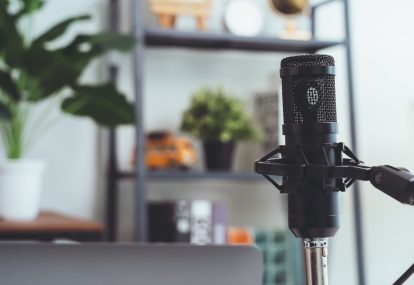Let us state the not so obvious: podcast editing is hard work! No wonder it is considered by many as one of the least appealing aspects of podcasting. Recording is often the fun part—you talk to esteemed guests about topics you are passionate about and share wisdom and insights. You can liken the experience to having a party or get-together of some sort.
Editing on the other hand is often viewed as the exact opposite. It is considered boring by many. It’s akin to sweeping the floor or washing the dishes after a party. Unfortunately, in podcasting, editing is not some trivial process you can easily do without. If truth be told, it is a crucial part of the overall podcasting process.
The good news is there are numerous ways to hasten the podcast editing process without compromising quality. The following tips will get your podcast editing efforts off to an exceptional start:
Plan accordingly
With a clear plan in place, you’ll be able to significantly reduce the need for editing. For starters, make sure you have the following key aspects all figured out:
- Where you want the conversation to go
- Who leads certain transitions and segments
In addition, it is also crucial that you have done your research and have all the important aspects covered so you will be able to effortlessly dictate where the discussions will go.
Create templates
Professional software like the Adobe Audition will give you the option to create actual templates. However, if the tool you are using does not give you that alternative, you can create a project with everything except your vocal track.
This template can contain the following:
- Track effects – certain editing tools gives you the option to apply effects to any particular track or audio. This can spare you from all the trouble of having to reprocess audio each and every time.
- Bumpers – pre-insert the outro, segues, and intro onto their own track. Ensure you also have all the fades configured so you can easily shift them to their apt times.
- Timings – put a marker on your bumpers so it will be easier to figure out where the vocal track(s) will begin or end.
Utilize the right tools
Sure, it is possible to drive in a nail using a spoon. However, there’s no denying using a hammer will not only save time, it can also do the job better. The same is true when it comes to using podcast editing tools. Without the right tools, tasks can become very challenging to complete or may take much longer to accomplish. In addition, learn as much about the editing tools you are using as you possibly can so you can use it to your full advantage.
Mark edit points
To help make the editing process more straightforward, ensure you mark the times where something needs to be removed (cross-talks, interruptions, etc.) Fortunately, most recording apps and devices give you the option to put a marker directly in the recording. In cases where edit points are not directly marked into the audio, it is recommended that you edit from end to beginning. Doing so will help warrant you don’t shift all the timestamps you wrote down with each prior edit.
Be mindful of the transitions
If you have been editing podcasts for quite some time, it is highly likely that you noticed most edit points are in the transitions. This is especially evident in interview or co-hosted episodes. When recording multiple tracks, it will be easier to see where one person stopped talking and where the other person started.
Transitions are prime areas for cross-talks, pointless babbles, and awkward silences. With that in mind, examine the beginnings and ends of transitions. You’d be surprised to discover that as much as 75% of the edits required are in those areas. If you are hosting a show by yourself, transitions occur when you move from one segment to the next or from one topic to another.
How do you make your podcast editing process easier? Sound off in the comments section below!
Share this post!




